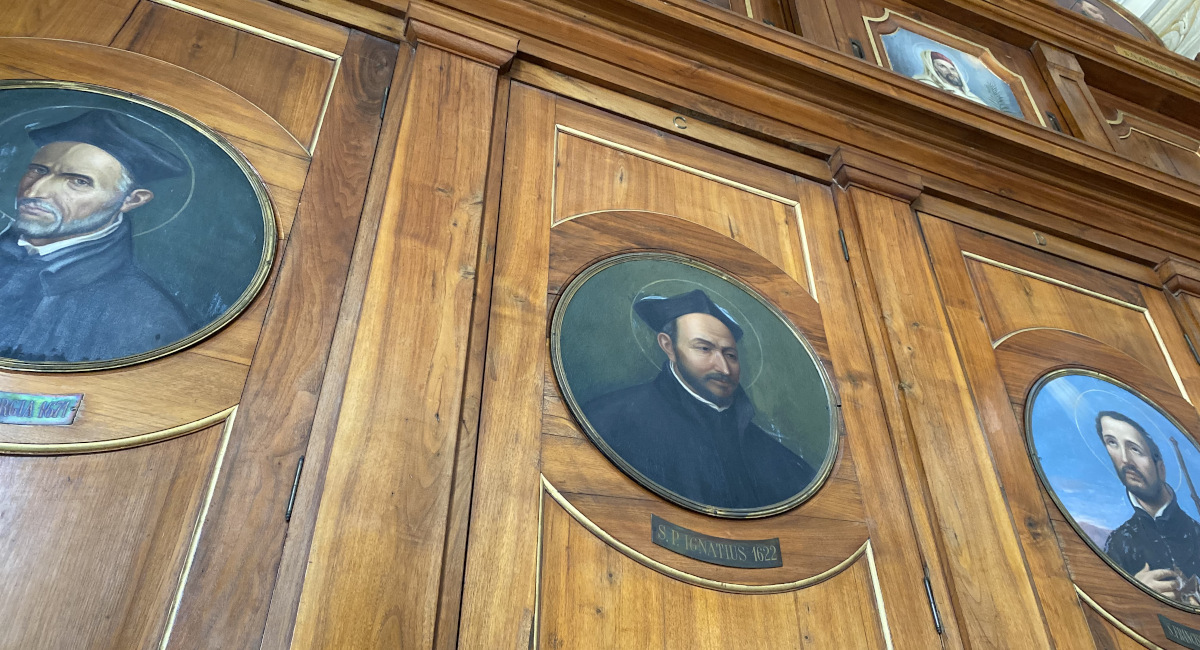 There is a special room in the Jesuit Curia in Rome devoted to the Jesuit saints. Markedly different from the rest of the building, which by Roman standards is quite spartan and modern, la sala dei santi (or the “room of saints”) was constructed in 1936. It is a beautifully made space featuring wooden cabinets five metres in height, portraits of the saints and blessed, and frescoes on the walls and ceiling.
There is a special room in the Jesuit Curia in Rome devoted to the Jesuit saints. Markedly different from the rest of the building, which by Roman standards is quite spartan and modern, la sala dei santi (or the “room of saints”) was constructed in 1936. It is a beautifully made space featuring wooden cabinets five metres in height, portraits of the saints and blessed, and frescoes on the walls and ceiling.
 While the portraits and frescoes are enough to keep one’s eyes occupied, there are more things to be discovered behind the wooden doors. Each one contains carefully stored volumes, painstakingly written out by hand, about each saint or blessed whose cause was taken up for beatification. The documents contain, among other things, testimonies from witnesses detailing miracles performed by these holy men. This is where the real stories are, preserved for the ages.
While the portraits and frescoes are enough to keep one’s eyes occupied, there are more things to be discovered behind the wooden doors. Each one contains carefully stored volumes, painstakingly written out by hand, about each saint or blessed whose cause was taken up for beatification. The documents contain, among other things, testimonies from witnesses detailing miracles performed by these holy men. This is where the real stories are, preserved for the ages.
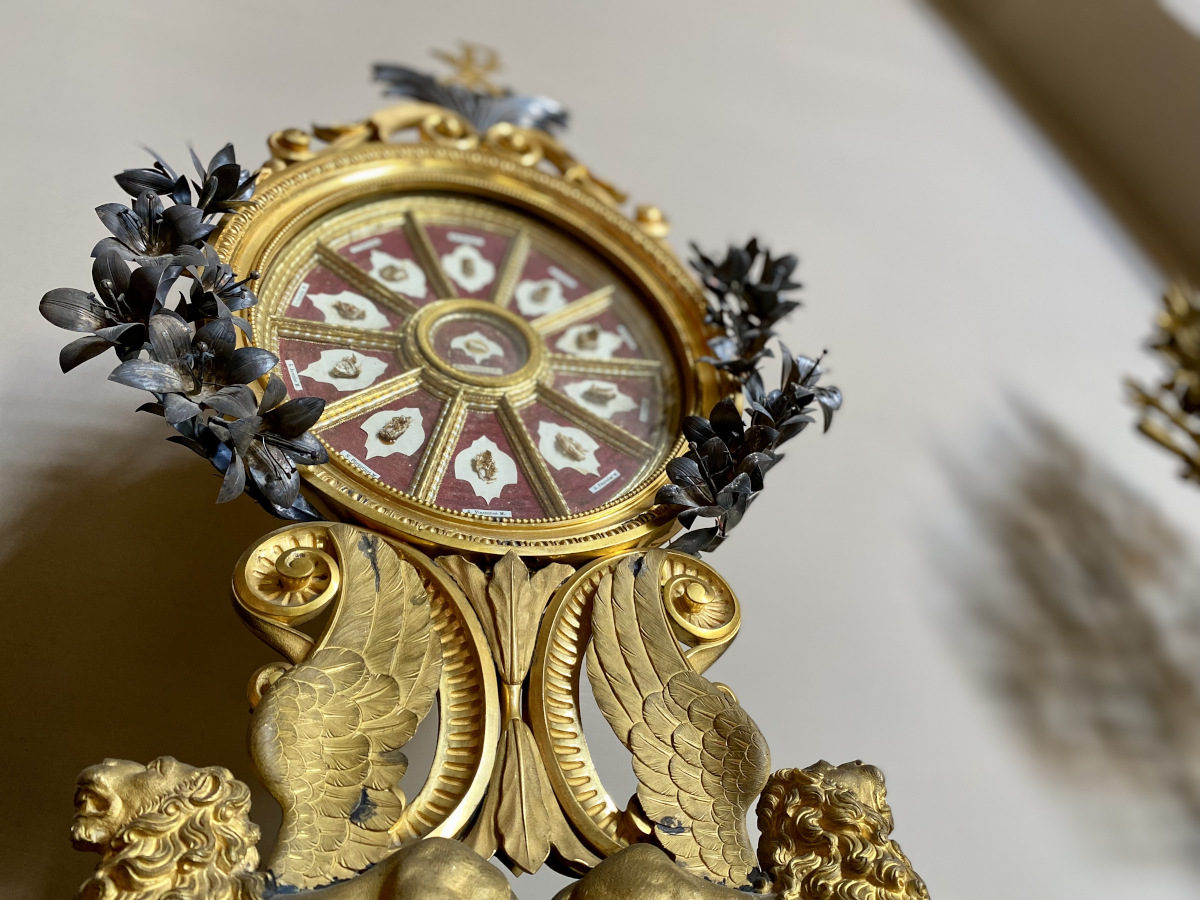 While the room of saints is open to visitors, such as those who are doing research or on a pilgrimage, the cabinets are kept secure. As General Postulator, Fr Pascual Cebollada SJ holds the keys to unlock the cabinets. The General Postulator is a major official of the Curia who “oversees the processes towards beatification or canonization of Jesuits or others for whom the Society of Jesus has been asked to act.” It is a job that requires Fr Cebollada to be very meticulous and patient, as the causes for beatification and canonization can take a very long time.
While the room of saints is open to visitors, such as those who are doing research or on a pilgrimage, the cabinets are kept secure. As General Postulator, Fr Pascual Cebollada SJ holds the keys to unlock the cabinets. The General Postulator is a major official of the Curia who “oversees the processes towards beatification or canonization of Jesuits or others for whom the Society of Jesus has been asked to act.” It is a job that requires Fr Cebollada to be very meticulous and patient, as the causes for beatification and canonization can take a very long time.
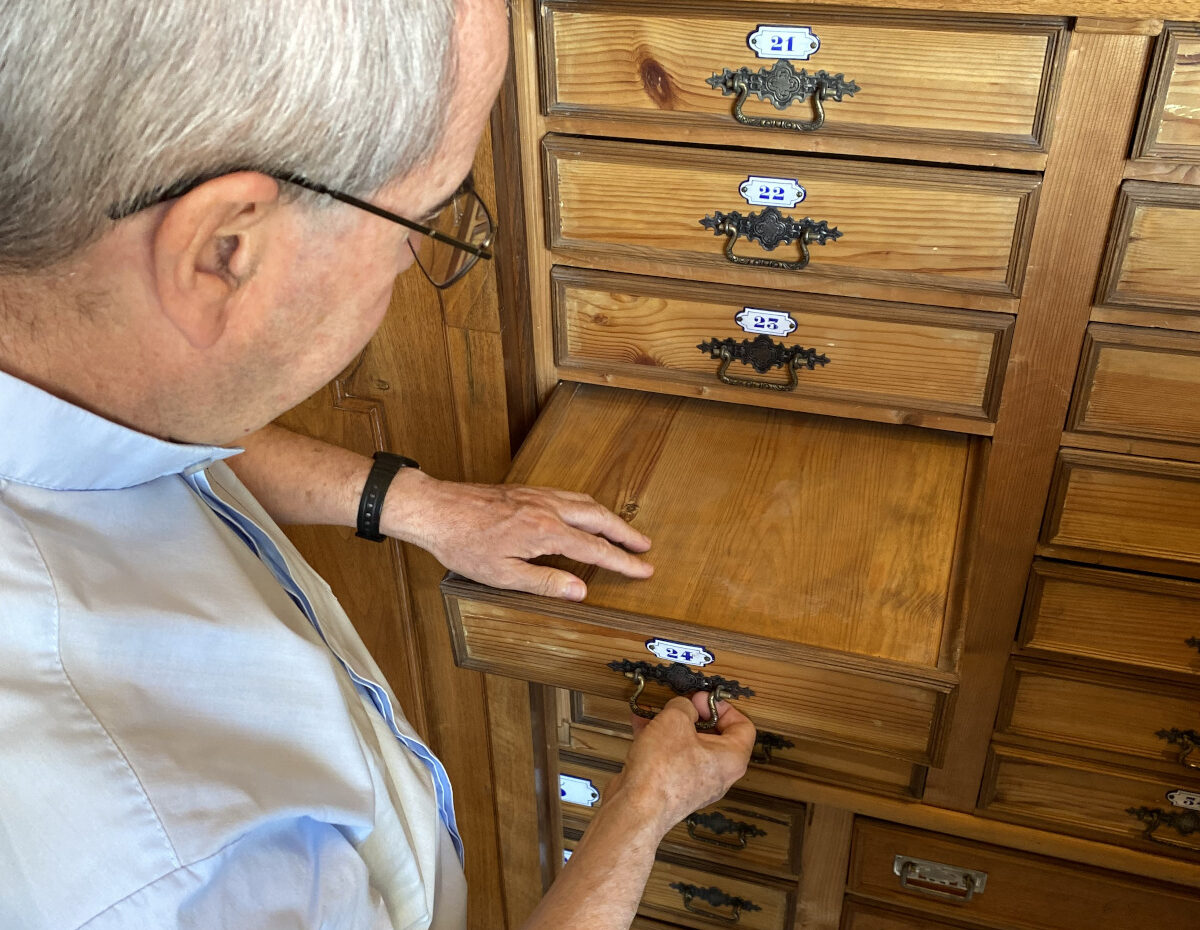 Adjacent to the room of saints is a smaller room, considerably less beautiful but filled with equally interesting artefacts. There are “modern” relics stored in a cupboard, first-class ones, which are either bone fragments, teeth, or hair. There are also second-class relics, usually clothing or something that has touched the body, stored in this backroom. Fr Cebollada says that occasionally these modern relics are brought out by special request.
Adjacent to the room of saints is a smaller room, considerably less beautiful but filled with equally interesting artefacts. There are “modern” relics stored in a cupboard, first-class ones, which are either bone fragments, teeth, or hair. There are also second-class relics, usually clothing or something that has touched the body, stored in this backroom. Fr Cebollada says that occasionally these modern relics are brought out by special request.
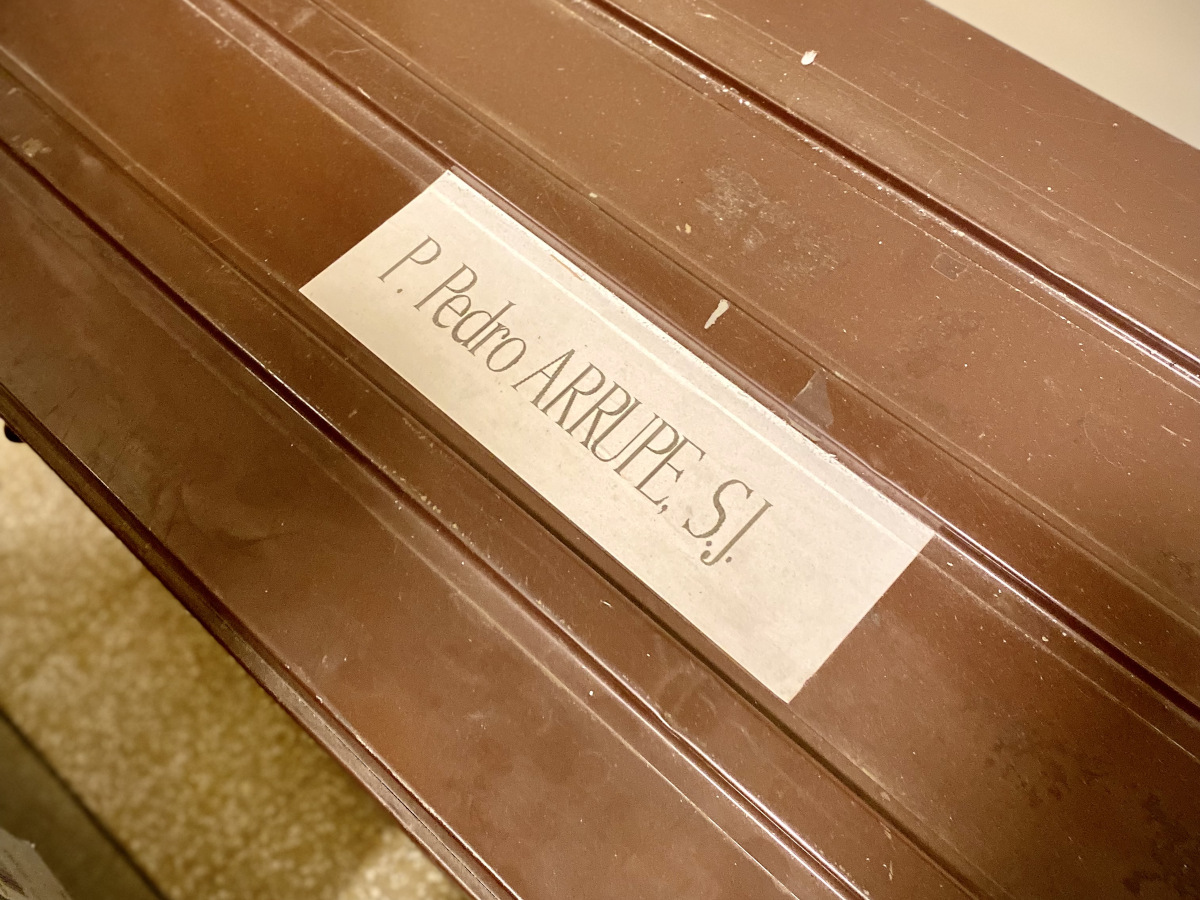 In the middle of the organised chaos, there is a plain brown box labelled with Fr Pedro Arrupe’s name, filled with personal effects that were saved upon his death—a Rubik’s cube, his slippers, some old photographs. The cause for beatification and canonisation for Fr Arrupe was opened only in 2019, and it will take some years before it comes to fruition, but it seems poignant that his humble box sits in the storage room, waiting patiently and silently, just as Fr Arrupe did during the last decade of his life.
In the middle of the organised chaos, there is a plain brown box labelled with Fr Pedro Arrupe’s name, filled with personal effects that were saved upon his death—a Rubik’s cube, his slippers, some old photographs. The cause for beatification and canonisation for Fr Arrupe was opened only in 2019, and it will take some years before it comes to fruition, but it seems poignant that his humble box sits in the storage room, waiting patiently and silently, just as Fr Arrupe did during the last decade of his life.
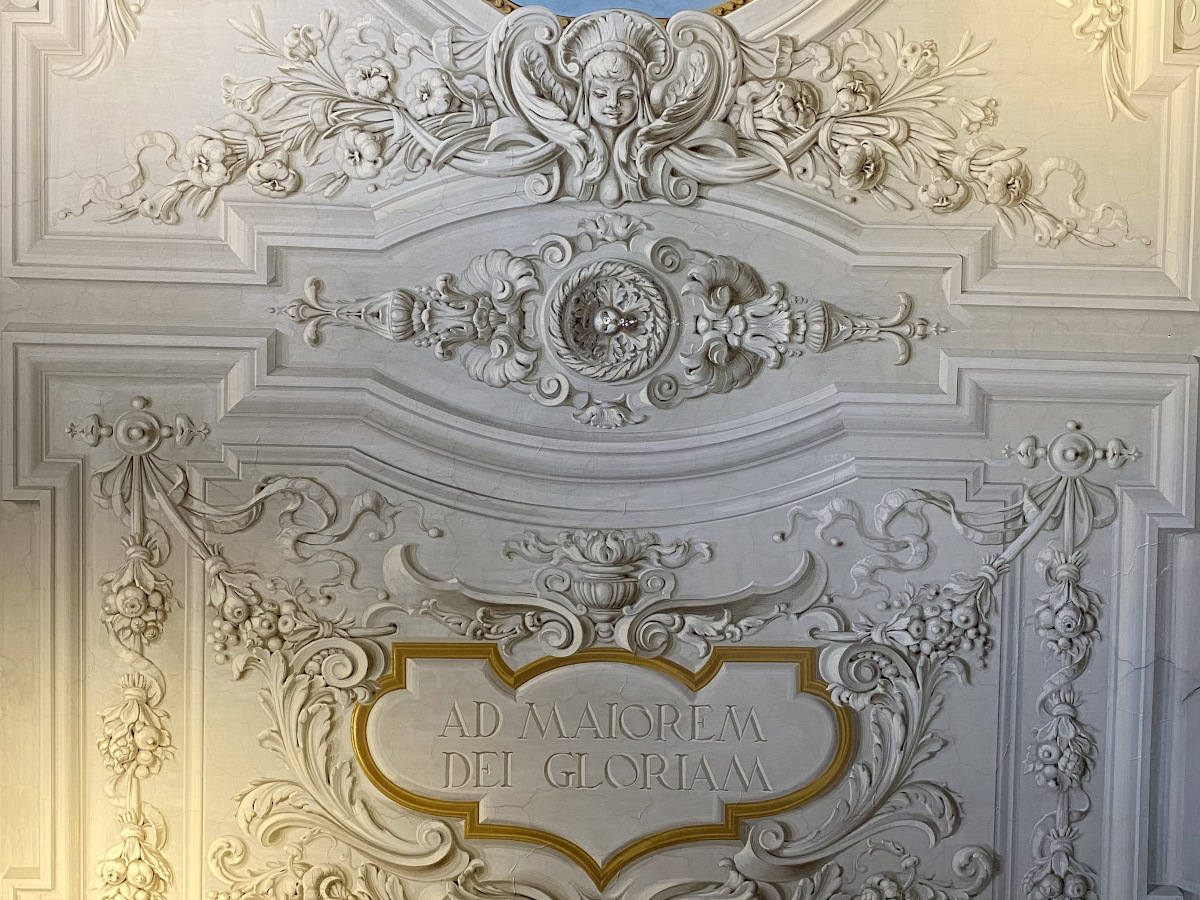
Sometimes a cause for beatification will fall by the wayside, particularly when the devotion fades away. Keeping a devotion alive calls for an active faith, a constant remembering of the lives of saints who lived and died for the greater glory of God.
